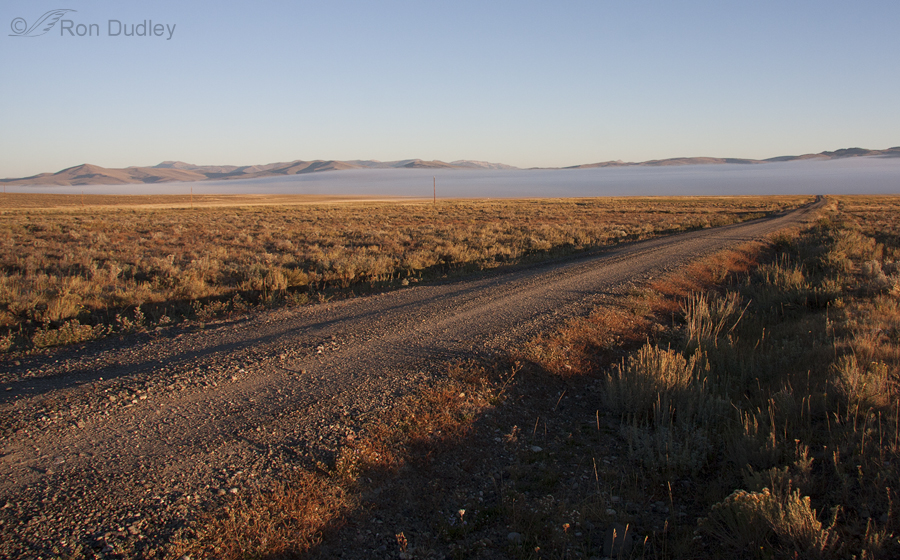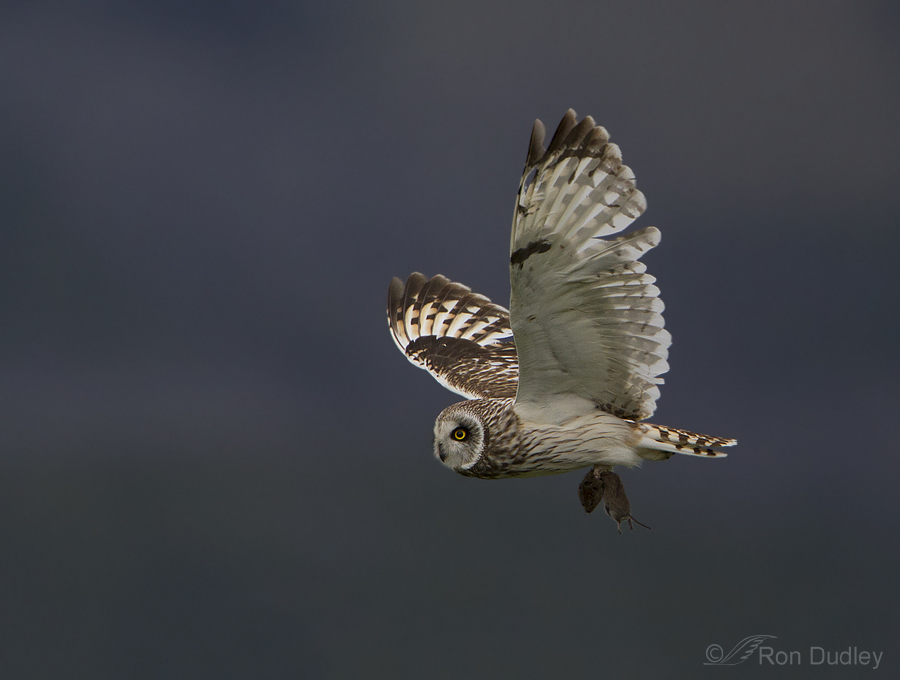Though Short-eared Owls are one of the worlds most widespread owls, the species is highly dependent on the density of its small mammal prey, voles in particular. Since vole populations fluctuate wildly, Short-eared Owls show significant local variation in numbers and reproductive success from year to year.
There were good numbers of Short-eared Owls in Montana’s Centennial Valley until the summer of 2011 when they virtually disappeared from the area. This past summer I spent about 2 weeks in the valley spread out over 4 trips and only saw one bird – and believe me I looked hard for them! At least one of the reasons for their decline is very likely a crash in the vole populations, as documented by staff at Red Rock Lakes National Wildlife Refuge.
The image below was taken from almost this very spot (above – that’s early morning ground fog in the background). In previous years I had photographed a number of interesting behaviors of Short-eared Owls from this road but for the last two summers the owls have been strangely, almost hauntingly absent. I miss them.
1/800, f/5.6, ISO 800, 500 f/4, 1.4 tc, canvas added for composition, not baited, set up or called in
This is a male delivering breakfast (a vole, of course) to his family – a female and two chicks. The very dark background is the Centennial Mountains in deep shade (I made no color adjustments to the image). I don’t recall ever taking a flight shot that I liked at a lower shutter speed than this. I was panning and may have caught the bird in a wing’s-up glide which could account for the relative sharpness at this shutter speed in flight.
Compared to previous summers, Short-eared Owls have also been almost nonexistent on Antelope Island recently. I suspect the reason may also be a crash in the local vole population. I used to regularly see voles scurrying about on the ground as I was photographing birds but it’s been a rare occurrence for many months now.
Several other raptor species on the island also depend largely on voles. I can only hope for a return of healthy numbers of this little rodent. And soon…
Ron




That is one sensational shot Ron! Thanks so much for sharing it!
Charlotte
I do hope that the voles return – in quantity – soon.
That is an incredible shot of the owl in flight. I could almost count the flight feathers – but resisted the temptation.
Thank you, Elephant’s Child. I’m glad you resisted…
That’s a beautiful shot of a handsome bird. I hope they come back strong…that this is only a very short set back. I’ve heard that rabbits have a 7-year cycle, in which their numbers increase to a population high, then decline…is this true of other small mammals, like voles, too? Much as I love being a very amateur naturalist, there’s an awful lot of heartbreak to it, too. I can’t even imagine how much of it you and Mia must feel with your experiences and keen, close up observations.
Thanks, Patty. Many small mammals have naturally fluctuating populations – rodents in particular. Though rabbits are Lagomorphs, they fluctuate also.